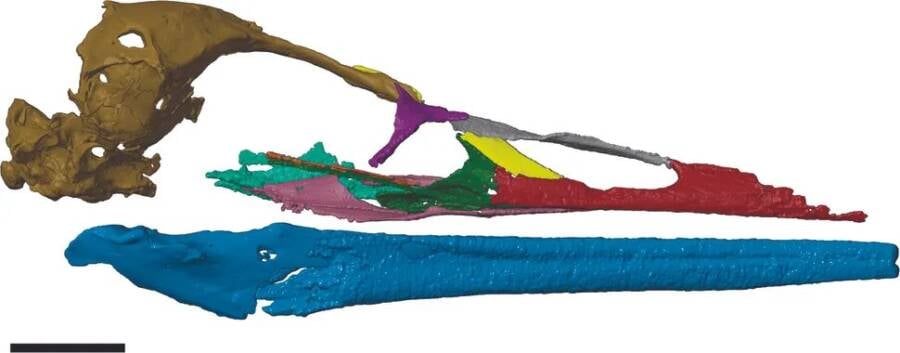“Unearthed: The Prehistoric ‘Duck’ That Could Redefine Our Understanding of Modern Birds!”
Julia Clarke, a paleontologist at the University of Texas, Austin, was the first to describe V. iaai as an ancestor of modern birds, particularly waterfowl. Other scholars doubted the finding, citing the 1992 fossil’s lack of a skull.
“[The initial fossil] was just a completely different part of the skeleton. And when it comes to birds, the skull has a lot of phylogenetic or informative characteristics that tell you what it is,” study co-author Patrick O’Connor, an evolutionary biologist at Ohio University, told Live Science.
Then, in 2011, a fossilized skull of V. iaai was discovered, providing researchers the opportunity to better place the bird in the evolutionary record.
Analyzing The Oldest Modern Bird Fossil Ever Discovered
In a study recently published in the journal Nature, researchers examined the skull of V. iaai to learn more about the prehistoric species and its place in the bird family.
Using 3D reconstruction, researchers identified several key features of the bird. First, they discovered that it had a brain shape and beak structure typical of modern birds. The rock the skull was encased in was between 68.4 and 69.2 million years old, suggesting modern birds evolved before dinosaurs went extinct.

Joseph Groenke/Ohio University and Christopher Torres/University of the PacificA digital reconstruction of the skull of Vegavis iaai.
The analysis also showed that V. iaai had strong jaw muscles similar to today’s diving birds. This evidence supports a connection between V. iaai and modern birds, but it has not positively identified the species as an ancestor of ducks and geese.













